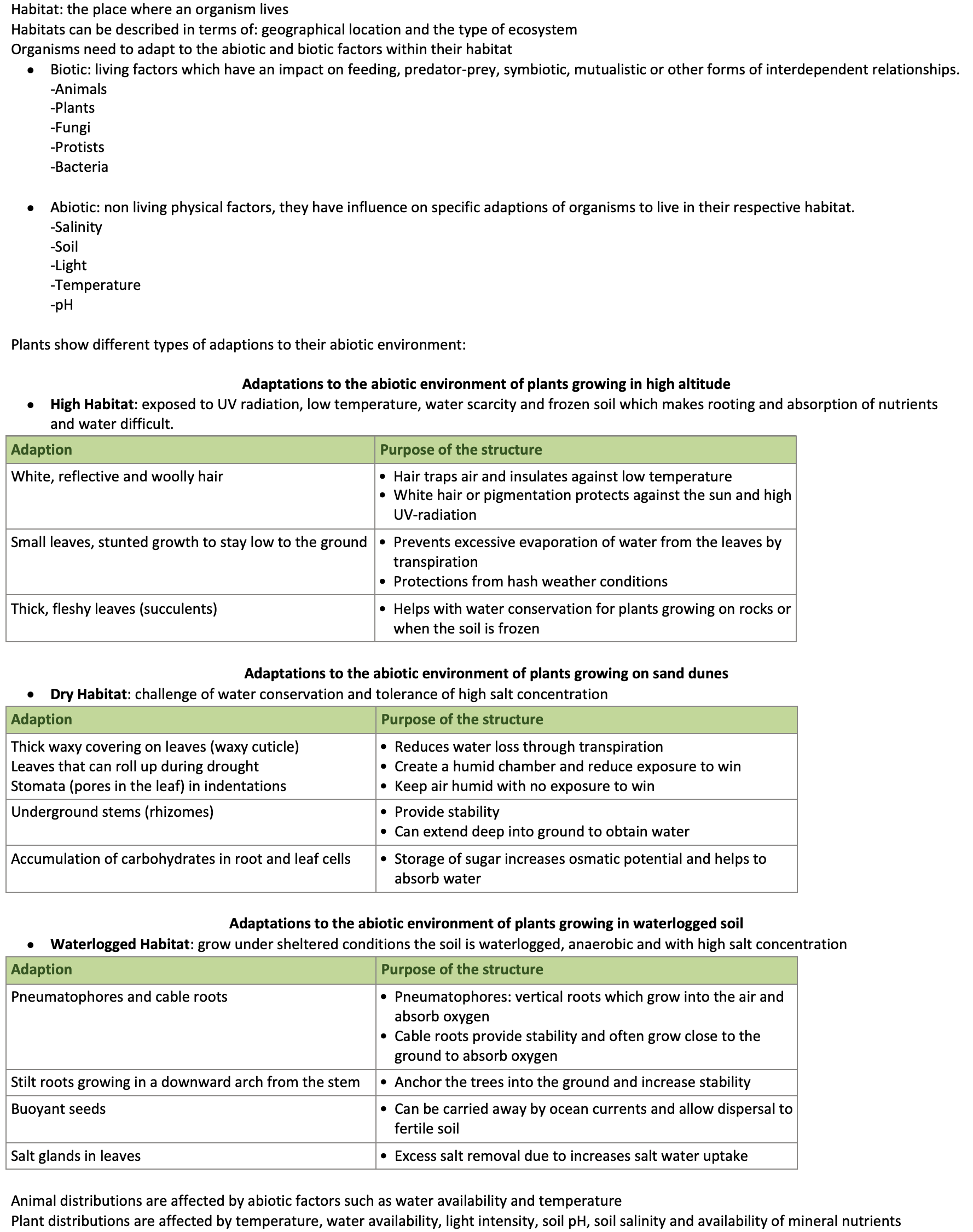Abiotic and Biotic Factors
Habitat: the place where an organism lives
Habitats can be described in terms of: geographical location and the type of ecosystem
Organisms need to adapt to the abiotic and biotic factors within their habitat
Biotic: living factors which have an impact on feeding, predator-prey, symbiotic, mutualistic or other forms of interdependent relationships.
-Animals
-Plants
-Fungi
-Protists
-Bacteria
Abiotic: non living physical factors, they have influence on specific adaptions of organisms to live in their respective habitat.
-Salinity
-Soil
-Light
-Temperature
-pH
Plants show different types of adaptions to their abiotic environment:
Adaptations to the abiotic environment of plants growing in high altitude
High Habitat: exposed to UV radiation, low temperature, water scarcity and frozen soil which makes rooting and absorption of nutrients and water difficult.
Adaption | Purpose of the structure |
White, reflective and woolly hair |
|
Small leaves, stunted growth to stay low to the ground |
|
Thick, fleshy leaves (succulents) |
|
Adaptations to the abiotic environment of plants growing on sand dunes
Dry Habitat: challenge of water conservation and tolerance of high salt concentration
Adaption | Purpose of the structure |
Thick waxy covering on leaves (waxy cuticle) Leaves that can roll up during drought Stomata (pores in the leaf) in indentations |
|
Underground stems (rhizomes) |
|
Accumulation of carbohydrates in root and leaf cells |
|
Adaptations to the abiotic environment of plants growing in waterlogged soil
Waterlogged Habitat: grow under sheltered conditions the soil is waterlogged, anaerobic and with high salt concentration
Adaption | Purpose of the structure |
Pneumatophores and cable roots
|
|
Stilt roots growing in a downward arch from the stem |
|
Buoyant seeds |
|
Salt glands in leaves |
|
Animal distributions are affected by abiotic factors such as water availability and temperature
Plant distributions are affected by temperature, water availability, light intensity, soil pH, soil salinity and availability of mineral nutrients
